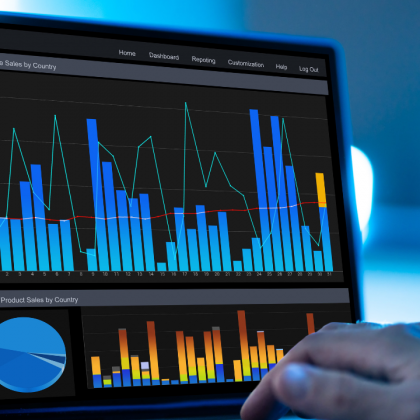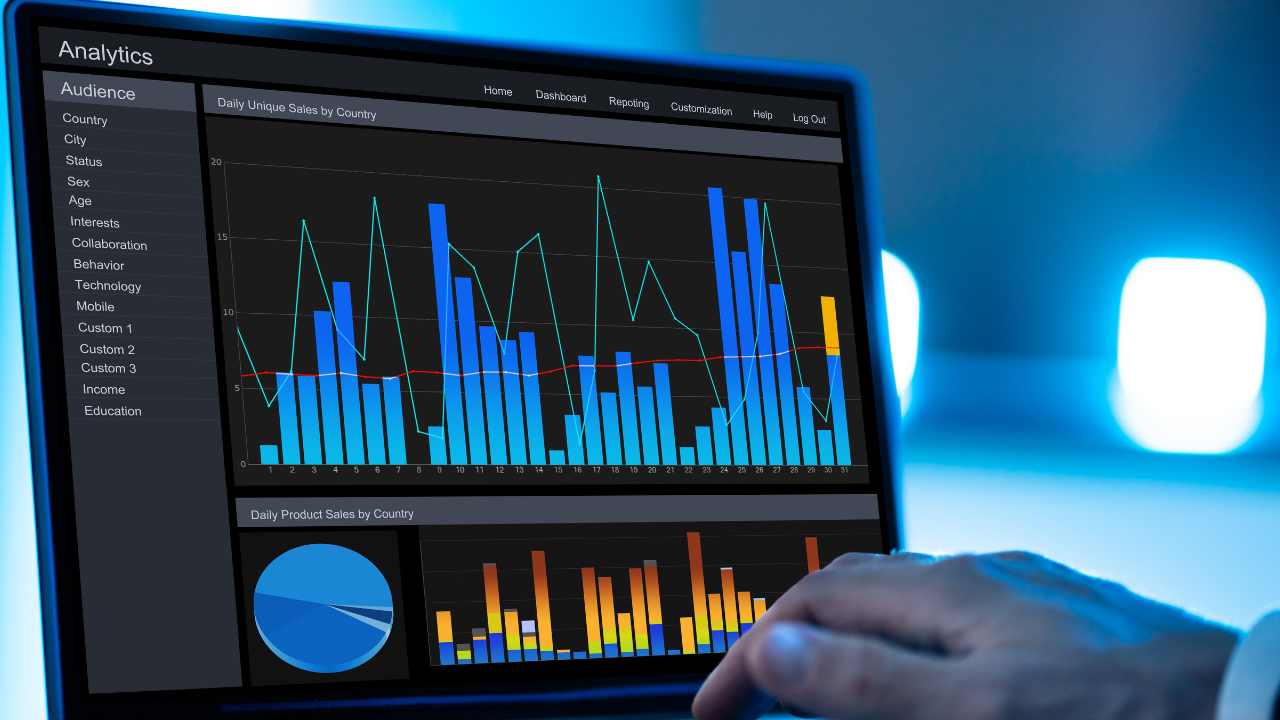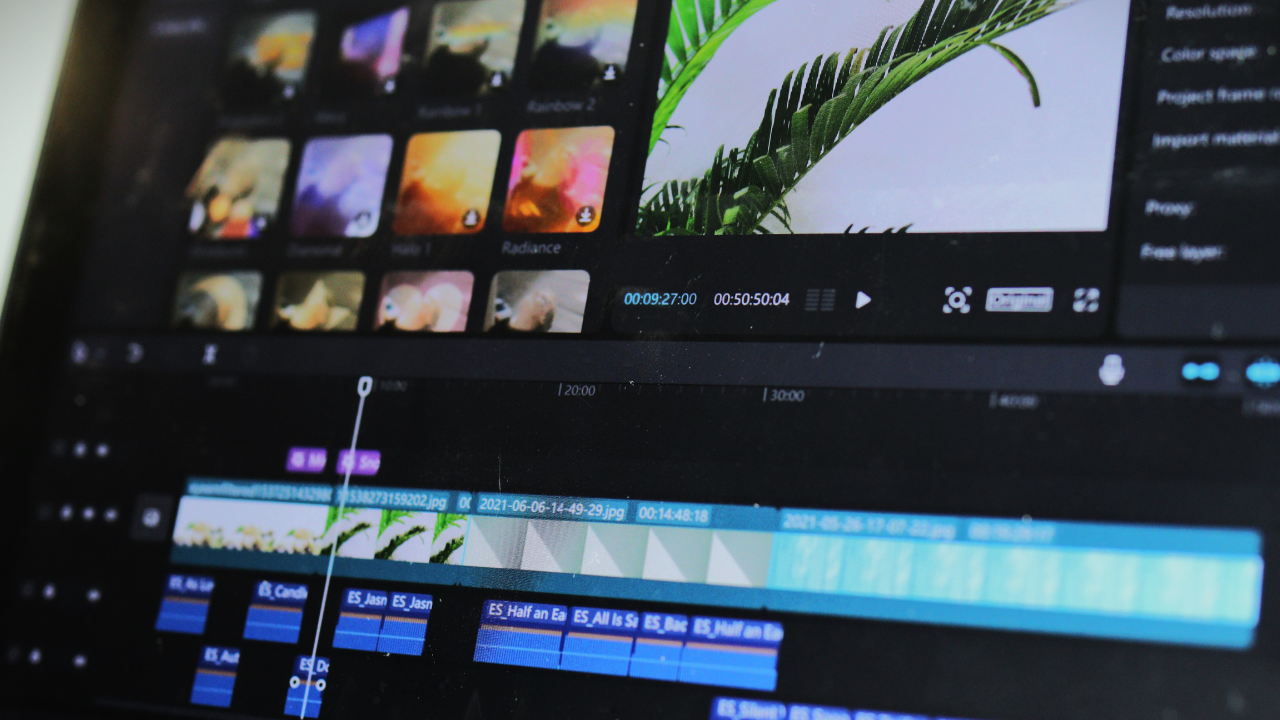Feature your business, services, products, events & news. Submit Website.
Breaking Top Featured Content:
YouTube Analytics: A Complete Guide

Content is king in the digital era, but the rulers are empowered by their mastery of the domain. Every video producer has to know how to use YouTube analytics to optimize the growth of their channel. It takes more than just counting views to understand your audience, improve your content strategy, and increase interaction.
YouTube Analytics Basics
Fundamentally, YouTube Analytics offers a multitude of information that extends far beyond view numbers. It provides information about who views your videos, how they found them, and what keeps them interested. It is essential for every creative hoping to establish a successful YouTube presence to grasp these principles.
YouTube Studio: Your Dashboard for Success
Your channel’s central nervous system is YouTube Studio. Its structure is intended to provide you with easy access to the most crucial information, including comment moderation and real-time analytics. The dashboard serves as a creator’s entry point into important analytics.
Advanced Insights in YouTube Studio
Beyond the fundamentals, YouTube Studio provides powerful tools that may dramatically improve the performance of your channel. Functionalities such as traffic source kinds and audience retention graphs provide you with a better idea of how well your promotional efforts are working and how many people have seen your material.

The Key YouTube Metrics Every Creator Should Know
YouTube metrics serve as the foundation for understanding how content resonates with viewers and how a channel is performing overall. Each metric offers unique insights, and together, they provide a comprehensive picture of a channel’s health and growth potential. Here’s a breakdown of these pivotal metrics and what they signify:
- Watch Time: This is the total amount of time that viewers have spent watching your videos. It’s a critical metric because YouTube prioritizes content that keeps viewers engaged for longer periods, contributing to more extended sessions on the platform.
- Indicates overall engagement and content value.
- Impacts how your videos are recommended on YouTube.
- Views: The number of times your video has been watched. This metric is often the first indicator of your content’s reach.
- Helps gauge initial interest in your content.
- More views can lead to higher visibility in YouTube search results and recommendations.
- Average View Duration: This measures the average amount of time viewers spend watching a video. It’s a key indicator of how engaging your content is and whether it meets viewers’ expectations based on the title and thumbnail.
- Signals content quality and viewer satisfaction.
- Essential for understanding if viewers watch through to the end or drop off early.
- Subscriber Growth: Tracks the increase or decrease in your channel’s subscribers. It’s a measure of your channel’s ability to retain viewers and convert them into long-term followers.
- Reflects the loyalty and growth of your audience.
- Indicates the potential reach of your future videos.
- Engagement Metrics (Likes, Comments, Shares): These metrics show how viewers are interacting with your videos. High engagement rates often signal that viewers find your content compelling or worth discussing.
- Provides feedback on viewer sentiment and content quality.
- Enhances community building and viewer loyalty.
- Click-Through Rate (CTR): The percentage of people who click on your video’s thumbnail when it’s shown to them. A higher CTR means that your video thumbnails and titles are effective at grabbing attention.
- Measures the effectiveness of your video titles and thumbnails.
- Vital for understanding how enticing your video appears in search results and recommendations.
- Audience Retention: Shows what percentage of your video is watched and identifies at what points viewers are dropping off. This can help you pinpoint elements of your content that may be losing viewers’ interest.
- Helps in optimizing video structure and content pacing.
- Crucial for content refinement and improving viewer watch time.
- Traffic Source Types: Identifies where your views are coming from, whether it’s through YouTube search, suggested videos, direct links, or other sources. This information can help tailor your content and YouTube SEO strategies.
- Informs content promotion and distribution strategies.
- Helps understand viewer discovery paths and optimize for them.
- Demographics: Provides insights into the age, gender, location, and even device type of your audience. This can help in tailoring content to your audience’s preferences and habits.
- Enables content customization for target audience segments.
- Assists in global audience targeting and content localization strategies.
Knowing and analyzing these metrics allows creators to make data-driven decisions, tailor content to their audience’s preferences, and implement strategies for sustained growth and engagement on YouTube.
| Metric | Significance | Impact on Content Strategy | Impact on Audience Engagement |
|---|---|---|---|
| Watch Time | Total duration viewers have spent watching videos | Guides content length and depth to retain viewers longer | Indicates overall engagement and interest in the content |
| Views | Number of times videos have been watched | Helps gauge content reach and initial interest | Reflects the breadth of content exposure |
| Average View Duration | Average time spent by viewers on a video | Informs about content pacing and viewer retention | Signals content’s ability to maintain viewer interest |
| Subscriber Growth | Increase or decrease in channel subscribers | Reflects content’s appeal to encourage long-term following | Represents viewer loyalty and commitment |
| Engagement Metrics | Interactions like likes, comments, and shares | Indicates content’s ability to provoke a response | Demonstrates viewer investment and interaction |
| Click-Through Rate (CTR) | Percentage of people clicking on a video after seeing the thumbnail | Measures effectiveness of titles and thumbnails in attracting views | Affects the likelihood of content being watched |
| Audience Retention | How much of the video is watched and where drop-offs occur | Helps identify and improve upon content segments that lose interest | Measures content’s relevance and engaging quality |
| Traffic Source Types | Origins of video views (e.g., search, direct links, suggested videos) | Aids in optimizing for specific discovery methods | Indicates how viewers find and engage with content |
| Demographics | Viewer characteristics (age, gender, location, device type) | Allows for tailoring content to specific audience segments | Enhances understanding of audience composition |
Accessing and Interpreting YouTube Analytics Data
Accessing this data is straightforward through YouTube Studio, but the key lies in interpretation. Understanding what the numbers mean and how they relate to your content strategy is what transforms raw data into actionable insights.

A Closer Look at YouTube Video Analytics
YouTube Video Analytics offers a granular view of the performance of individual videos, allowing creators to dissect viewer behavior and video reach. Metrics such as watch time, audience retention, and traffic source types provide a detailed understanding of how each video resonates with the audience.
YouTube Channel Analytics vs. Video Analytics
While Channel Analytics gives an overarching view of a channel’s health by tracking metrics like subscriber growth and overall watch time, Video Analytics zooms in on the performance of individual videos. This distinction is crucial as it allows creators to pinpoint successful content strategies and replicate them across the channel. Channel Analytics helps in understanding the broader audience and content trends, whereas Video Analytics is key to optimizing individual video performance to boost overall channel success.
Understanding Audience Retention on Your Videos
Audience Retention is a critical metric in YouTube analytics, reflecting the average percentage of a video that viewers watch. High retention rates indicate that viewers are captivated by the content, often resulting in increased visibility on the platform. This metric is pivotal for creators as it provides direct feedback on the video’s ability to maintain viewer interest and can guide improvements in content creation.
YouTube Videos: Traffic Source Types
Traffic source types on YouTube reveal how viewers find your content, whether through YouTube search, suggested videos, external websites, or direct navigation. Understanding these sources is essential for optimizing video discoverability and tailoring content to the platforms where your audience is most active.
Engagement Metrics: Likes, Shares, and Comments
Engagement metrics such as likes, shares, and comments serve as indicators of viewer interaction and sentiment. They not only reflect the video’s popularity but also influence YouTube’s algorithm, which can affect the video’s reach and the channel’s ability to attract new viewers.

YouTube Channel Statistics and Analytics
Channel statistics and analytics encompass a broad range of data, providing insights into the overall health and performance of a YouTube channel. This includes tracking subscriber growth, total views, and engagement trends, which are crucial for creators to understand their audience, refine their content strategy, and measure their success.
Subscriber Growth and Analysis
Subscriber growth patterns on YouTube can reveal much about a channel’s content strategy and audience engagement. Spikes in subscriber numbers often coincide with viral content or successful marketing campaigns, while dips may indicate a lack of fresh content or shifting audience interests.
YouTube Channel Traffic Sources
Understanding the sources of your channel’s traffic is essential for tailoring your content and marketing strategies. The majority of traffic may come from YouTube searches, indicating that your SEO efforts are effective. Alternatively, a significant portion might come from playlists or featured videos, suggesting that viewers are engaging with your curated content. External sources such as blogs or social media can also drive substantial traffic, highlighting successful cross-platform promotion. By analyzing these sources, you can identify which areas to focus on to increase your channel’s visibility and attract more viewers.
Playlist Performance in Analytics
Playlists are a strategic tool in YouTube Analytics, often overlooked by creators. A well-organized playlist can lead to increased watch time and viewer engagement, as it encourages binge-watching and guides the audience through a curated journey of your content. Analyzing playlist performance can reveal which collections are most popular and which videos keep viewers hooked, providing insights into how to structure future playlists for maximum impact.

YouTube Analytics for Other Channels
While YouTube does not provide analytics for channels that you do not own, some third-party tools and methodologies can offer competitive insights. Analyzing similar channels can help you understand industry benchmarks and identify content gaps in the market. This analysis can inform your content strategy, helping you to create videos that fill those gaps or capitalize on untapped audience interests.
Benchmarking Against Competitors
Benchmarking involves comparing your channel’s performance metrics, such as engagement rates, view counts, and subscriber growth, against those of your competitors. This comparison can help you understand your channel’s position in the market, identify best practices, and set realistic goals. By regularly benchmarking, you can stay competitive and make informed decisions about how to improve your channel’s performance.
Discovering Trends and Content Ideas
Analytics from other channels can be a goldmine for discovering emerging trends and generating fresh content ideas. By observing which topics are gaining traction and the types of content that are resonating with audiences, you can adapt your strategy to meet these new interests. This proactive approach can help you stay ahead of the curve and capture audience attention with relevant, trend-driven content.
The YouTube Partner Program and its Relation with Analytics
The YouTube Partner Program (YPP) is a gateway for creators to monetize their content on YouTube. To join, channels must meet specific criteria, such as having at least 1,000 subscribers and accumulating 4,000 valid public watch hours over the last 12 months. Analytics play a crucial role here, providing the data creators need to track their progress towards these thresholds. By regularly accessing YouTube analytics through the YouTube Studio app, creators can navigate their channel’s performance, understand audience preferences, and adjust their strategies to meet YPP criteria.

Exploring the YouTube Analytics Extension and Tools
Beyond the native YouTube Studio, there are numerous third-party tools and extensions that offer additional insights into channel performance. Tools like VidIQ and TubeBuddy integrate directly into YouTube, providing advanced analytics, keyword research, and optimization suggestions to enhance video strategy. These tools help creators to use YouTube analytics more effectively, offering a deeper dive into the data that YouTube Studio provides.
Why Use Third-party Tools in Your Video Strategy?
Third-party analytics tools can offer benefits that native YouTube analytics might not, such as detailed competitor analysis, comprehensive keyword tracking, and more nuanced audience insights. They can also provide real-time data and predictive analytics, helping creators to make informed decisions quickly and adapt their content strategy to the ever-changing YouTube landscape.
Popular YouTube Analytics Tool Options
Popular third-party analytics tools like Social Blade, Brandwatch, and BuzzSumo offer creators a range of functionalities, from tracking video performance to analyzing social trends. These tools often provide deeper or alternative insights compared to YouTube Studio, helping creators to optimize their content and grow their audience more effectively.

YouTube Analytics Pitfalls to Avoid
When interpreting YouTube Analytics, it’s crucial to navigate the data with a nuanced understanding to make informed decisions for your channel’s growth. Falling into the trap of common misconceptions can lead to misguided strategies. Here are some pivotal pitfalls to avoid:
- Equating All Views Equally: Not every view on your channel contributes the same value. It’s the depth of engagement, measured by watch time, that signals to YouTube’s algorithms that your content is worth promoting. Longer, sustained viewing periods are a stronger growth driver than a high number of brief visits.
- Overvaluing Subscriber Count: While a high subscriber count is often seen as a vanity metric, it doesn’t necessarily translate to active engagement or loyalty. A smaller, more engaged audience that consistently watches and interacts with your content is more beneficial than a large, passive subscriber base.
- Ignoring Watch Time and Engagement Metrics: YouTube prioritizes content that keeps viewers on the platform longer. Focus on metrics like average view duration and engagement (likes, comments, shares) to understand what content resonates with your audience and keeps them watching.
- Not Considering Audience Retention: Audience retention graphs provide insights into when viewers stop watching a video. This data is crucial for identifying content or pacing issues within your videos that could be leading to viewer drop-off.
- Misinterpreting Traffic Sources: Understanding where your views are coming from (search, suggested videos, direct links, etc.) can inform your content and SEO strategy. Misreading this data could lead you to optimize for the wrong traffic sources.
- Overlooking Demographics and Viewer Preferences: Analytics provide detailed information on who is watching your videos, including age, gender, location, and even device type. Ignoring these insights can lead to a disconnect between your content and your audience’s preferences.
- Neglecting the Importance of Click-Through Rate (CTR): A high CTR indicates that your thumbnails and titles are effective at drawing viewers in. Disregarding this metric can result in missed opportunities to optimize your video’s first impression.
- Failing to Analyze Top Performing Content: Identify patterns in your most successful videos – whether it’s the topic, presentation style, length, or engagement strategies used. Not leveraging this information can mean missing out on replicating success.
- Not Setting Realistic Benchmarks: Compare your channel’s performance against similar channels or past performance data rather than industry giants. Unrealistic benchmarks can lead to discouragement and skewed strategic decisions.
- Ignoring the Impact of External Factors: External events, trends, and seasonality can greatly influence your channel’s performance. Not accounting for these factors can lead to misinterpretation of analytics.
Understanding the intricacies behind these metrics allows creators to craft more effective content strategies and foster a more engaged community, ultimately leading to sustained channel growth.
FAQs: Youtube Analytics
What’s the Difference between YouTube analytics tools and YouTube Studio?
YouTube Studio is the official analytics dashboard provided by YouTube, offering a range of metrics directly related to your channel and videos. Third-party YouTube analytics tools, on the other hand, often provide additional features such as competitive analysis, more detailed keyword tracking, and sometimes predictive insights to help grow your channel.
What’s the best way to use YouTube analytics for growing a subscriber base?
The best way to use YouTube analytics for getting YouTube subscribers is to analyze key metrics like watch time, audience retention, and traffic sources to understand what content resonates with your audience. Use this data to create more targeted content, optimize video SEO, and engage with your audience through comments and community posts to encourage subscriptions.
What’s the best YouTube Analytics tool for beginners?
For beginners, YouTube Studio is the best analytics tool to start with as it is user-friendly and provides all the essential data needed to understand channel performance and ultimately market or advertise your business on YouTube. Once familiar with the basics, tools like TubeBuddy or VidIQ can be used for additional insights and growth strategies. These tools offer guided analytics and are designed to be accessible to users at all levels.
Read More:
Image: Depositphotos
This article, “YouTube Analytics: A Complete Guide” was first published on Small Business Trends
